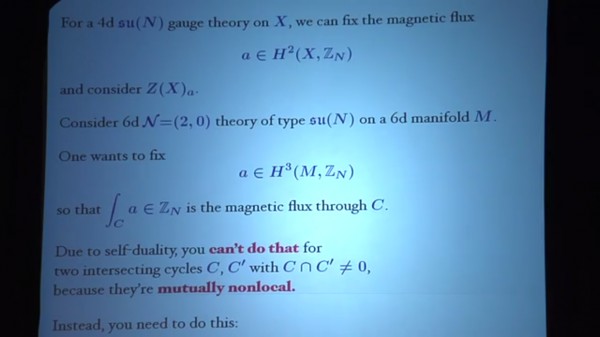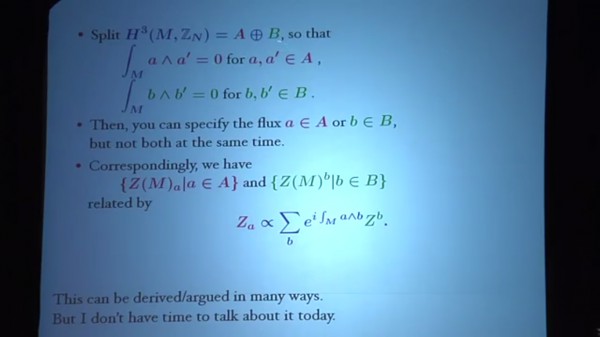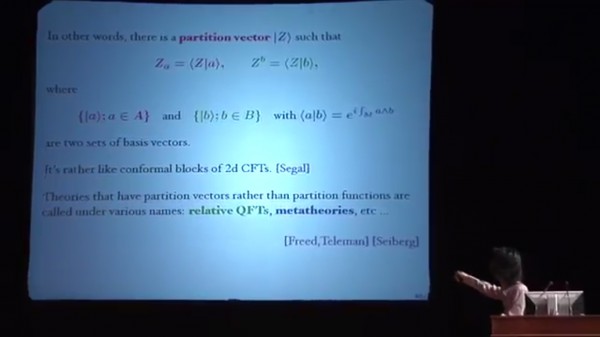I've been watching Tachikawa's talk.
Recent advances in Supersymmetry
around 38 minutes he talks about objects in \(H^3(M,\mathbb{Z}_N)\) with the property that
\(\int_C a \in \mathbb{Z}_N\)
He says due to self duality in 6D dimensions two intersecting cycles C and C' with \(C \cap C' \neq 0\) are mutually non local.
It seems that mutually non-local means \(\int_M a \wedge b \neq 0\)
But why is this true, what happens when a theory is self dual?
What happens when you add supersymmetry?
He talks about the self dual 3 form what about other fields in the theory?
Is there a fermionic(or supersymmetric) generalization to \(H^3(M,\mathbb{Z}_N)\)?
What is the recipe to construct the partition vector?
Is there any detailed exposition of the subject ? What books discuss the object \(H^3(M,\mathbb{Z}_N)\)? I am familiar with the basic ideas of co-homology for U(1) gauge groups, but I have never really studied its generalization to other gauge groups.
Please excuse me if my questions are naive or too simple.
Edit: I have attached the related slides



 Q&A (4831)
Q&A (4831) Reviews (201)
Reviews (201) Meta (437)
Meta (437) Q&A (4831)
Q&A (4831) Reviews (201)
Reviews (201) Meta (437)
Meta (437)